Thermal imaging technology has really advanced over the past few years. This is an incredible technology. Not only US military but also police units are using it and now it’s becoming more and more affordable for civilians. Click here to see my favorite model (you will like it too).
Flir is a world-leading maker of thermal vision monocular. The following are reviews of their top models.
Table of Contents
Top Thermal Vision Monoculars
FLIR Scout TK
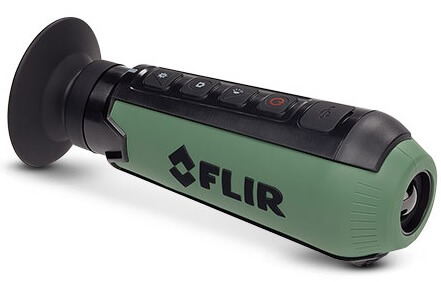
It is their base monocular, it costs only $599. A lot of you guys are going ‘oh my gosh, $599’, but for thermal imaging, this is unbelievable price.
One of the big things about this model is that it is a video camera and still camera, you can do both.
You can use it to see wildlife in reduced visibility or total darkness, to see through smoke, dust, and fog. Use it to search for missing pets or to scan sidewalks, parking lots, and other public areas in the dark.
The monocular does have a rubber eyepeice to be able to push on to your eye and to make it really comfortable because you do bring it up right to your eye.
There are four buttons:
- Power on/off switch
- Display brightness to lower or brighten the intensity of the light
- Snapshot/recording, press it once for a still picture or press and hold it to start your video
- Color palette selector
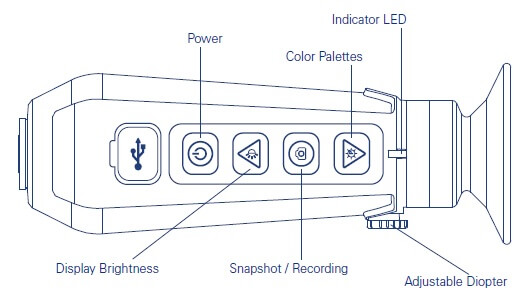
Keep in mind that you can’t record while you’re going into the different modes.
This handheld thermal vision monocular is very easy to use. There are not a lot of instructions needed.
Press the on/off button to turn it on, then press it again and it’ll bring up a user menu and you can set all kinds of different things. Long press the button to turn it off.
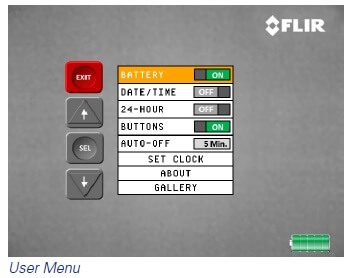
Display brightness button displays brightness selection screen. There are eight brightness levels which you can select.
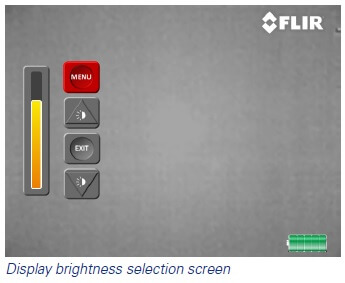
The color palette button selects the color palette that is applied to the image. You can scroll through them with the up and down buttons. Very easy, very intuitive. There are 9 color palettes:
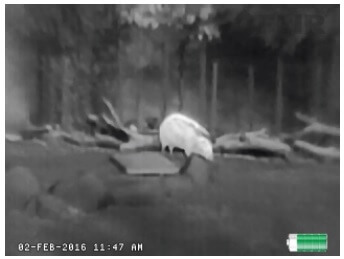
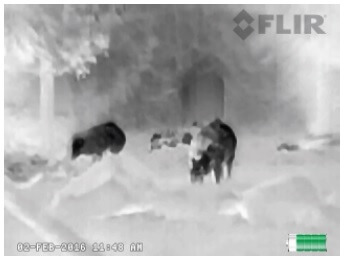
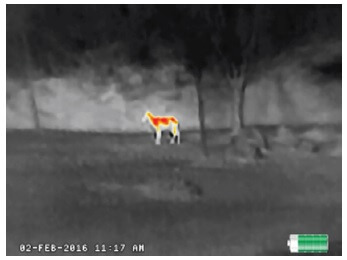
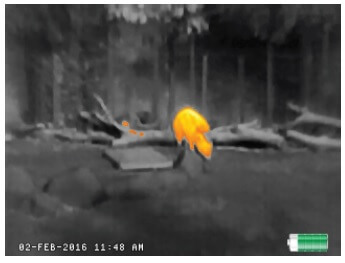
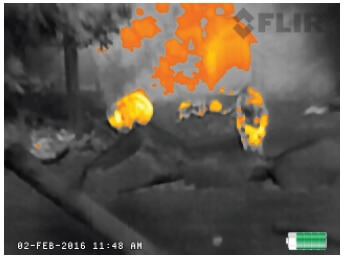




There is also have a diopter adjustment. Use it to adjust the position of the diopter lever to optimize the sharpness of the image in the viewfinder.
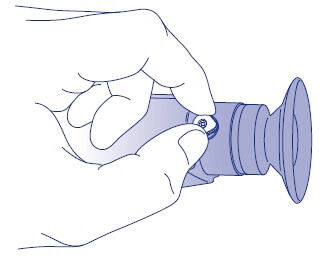
It does have a cover that protects the lens.
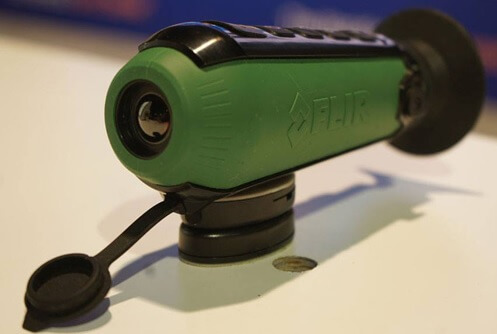
It goes out to about a hundred yard to detect people, animals and other objects that emit heat.
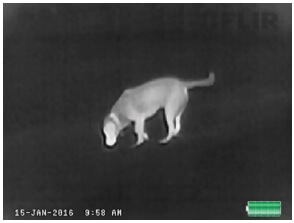
Unlike night vision, this thermal imaging monocular can be used during both the day and the night.
It’s six inches long by two inches in diameter, so it’s a pretty handy piece. It can be operated with one hand. It’s light weight, just 6 oz.
The Scout TK has a complete rubber overmold finish to it, which makes it really comfortable but it also protects the scope and it makes it a shock resistant up to about two meters and it’s rated ip67 which is dust and water ingress up to about thirty minutes. So waterproof up to 30 minutes.
This thermal vision monocular is made for the outdoors, made for hunting, for security and all the other things.
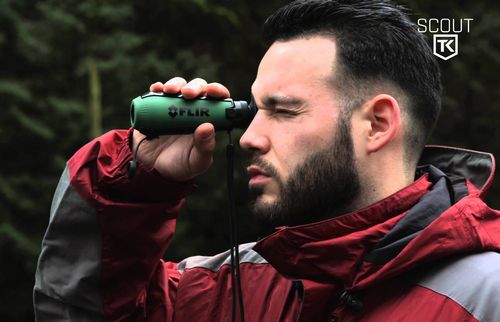
It has a 20 degree by 16 degree field of view. It is a fairly small lens and it runs on 9 Hertz. The LCD display is 640 by 480.
It does come with a lanyard which goes over your neck. You also get a USB cable to hook into your computer or other device. The flap is really secured which is good because it keeps it waterproof. Once it is plugged into your computer, you can download pictures and video.
This is also your charging cable. Hook USB into your computer and it will charge the battery. It is a lithium-ion battery that lasts about five hours.
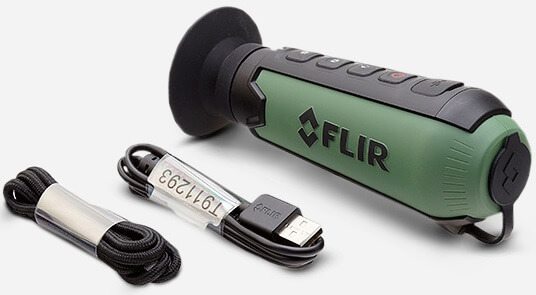
It has a memory card in it, about 1.78 gigabytes. So you can get quite a bit of video and photo on this little unit: up to 1000 images and up to 4 hours of video. It does not record sound.
There is auto power off option to set the amount of time that the camera can be active without any user interaction prior to shutting off. The options are 5 minutes, 10 minutes, 20 minutes, and never.
Here is how it really works:
FLIR Scout II
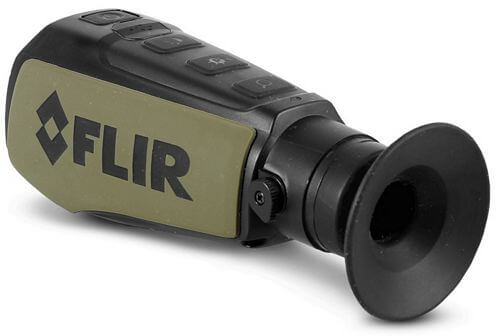
This is another handheld unit that is part of the Scout line from FLIR.
It is a nice compact little thermal imaging camera and it comes in three versions: 240, 320 and 640.
The 240 can detect a man at 383 yards, the 320 can detect a man at 800 yards and the 640 can detect a person at 1246 yards.
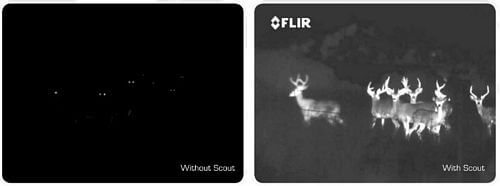
It’s very small, it’s really light and it’s incredibly handy.
This is actually amazing thermal vision monocular. We’ve tested the 240 and I can see details like a hand at 300 meters, which is pretty impressive.
It also has four buttons.
Display Brightness button is used to cycle through the five levels of display brightness.
White Hot/Black Hot/InstAlert button is used to toggle between the two video and the four InstAlert color palettes.
In White Hot palette, hotter objects appear as white or light grey. In Black Hot, hotter objects appear as black or dark grey. In the InstAlert palettes the hottest objects in the scene are highlighted in red. There are four pre-set levels of InstAlert.
If the unit sees something over a certain temperature gap from the surrounding background, it actually highlights it in red. So if you look at a deer or a person, there would be such a big difference in their temperature versus the ambient temperature around them that they would show up as red.
That’s really key because sometimes even though you can see at night that animal is still hard to see, because you can’t necessarily see the shape until they move, perhaps they’re partially obscured by branches or something, now this will tell you that’s hotter than the background, that it has blood coursing through his veins. That’s actually a really handy feature.
The 240 has a freeze frame so you can hit a button on the top of this and will stop that image so you can analyze it for a couple of seconds, you hit the button again and it goes back to real-time view.
The 320 has 2X zoom, while the 640 comes with 2X and 4X zoom.
There is a diopter setting like a binocular so if your eyes aren’t great or if you’re using it between multiple people, you can use the diopter setting to focus really well on to the LCD and then everybody can use it but it actually just makes it easy to improve and get a really sharp image.
It’s a FLIR sensor and it’s a great FLIR LCD (640 X 480) display so it’s really clear and has great definition.
It charges with USB so you can plug this in your computer or into your five watt charger that you have for your iPhone or your Android device. Charges up fully in about four hours which is a real quick turnaround time.
Self-contained battery lasts about five hours. It switches itself off after five minutes; it tells you that it’s going to switch itself off, so you can just override it, which means that the battery lasts a fair while because it makes you turn the thing off or you put it in your pocket and it’s going to turn itself off.
See: Perfect Trail Cam With WiFi, Night Vision, App
Start up is less than 5 seconds. Weight, including lens is just 12 oz.
Ingress protection rating is IP-67, submersible up to 1 meter. Drop test rating is 1 meter drop.
Other differences between the three models:
Field of view: 24° × 18° for the 240, 17° × 13° for the 320 and 18° × 14° for the 640.
The unit comes with a nice little pouch. It’s got a USB charger and it has several travel plugs. There’s USB cable so you can charge it and there is a little hand lanyard so you can put it through the base, so that you can keep it on your wrist, if you slip it, won’t fall.
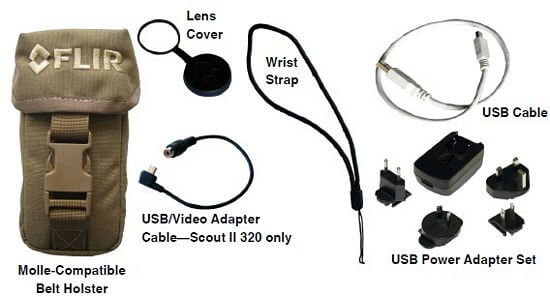
The 240 test
The 320 test
The 640 test
FLIR Scout III
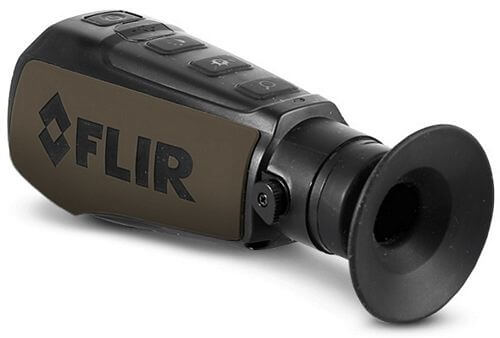
This is unquestionably the best model in the Scout line. But not just in this line. It could easily be the best on the market for the money!
Three models (based on resolutions) are available: 240, 320 and 640.
But what is the main difference between Scout II and Scout III?
It’s video refresh rate!
Previous models used an industry standard 9 Hz refresh rate, which is not that perfect. The Scout III has video refresh rate of 60 Hz (30 Hz for the 240 and 640).
This gives you seamless movie quality images. It also means that images refresh quicker, giving you a smoother viewing experience when you’re moving quickly.
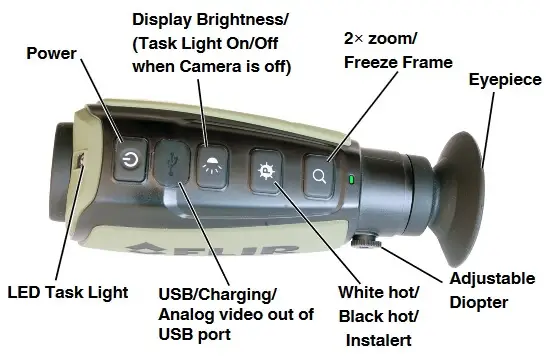
The Scout III comes with an analog video out adaptor to record or display images on an external monitor, such as laptop or tablet.
The image processing is improved on the III for sharper, clearer images.
When it comes to the heat detection range, the 640 model can detect the heat at a distance of up to 1200 yards away from the user (even 3,554 yards away for small vessels)! The 240 has 300 yards detection range, while the 320 has 600 yards.
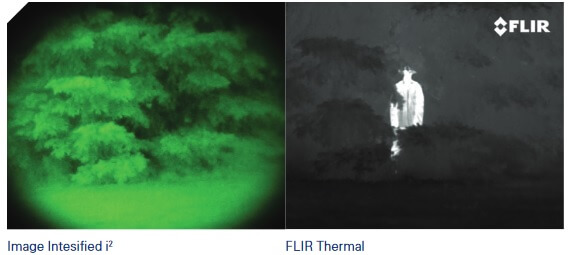
The 640 is the only model in the series that has both 2x and 4x zoom functions. The 320 has 2x zoom, while the 240 has no zoom but has freeze frame.
It has adjustable diopter, five levels of display brightness,color palettes: white hot, black hot, InstAlert Level 1, 2, 3 and 4, graded fire.
Lightweight design (weighs just 12 ounces), powered by internal rechargeable lithium ion battery that lasts more than five hours. Completely weathertight – the camera is IP67 rated and is even submersible.
Starts up in under 2 seconds! There is built-in LED task light. The camera shuts down after about five minutes if no buttons are pushed.
At the same price as the Scout II, the Scout III should be your first choice in buying thermal imaging monocular.
Uses of Thermal Vision Monocular
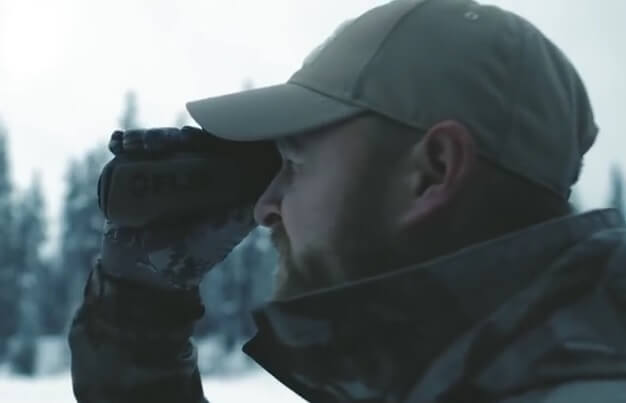
Let’s cover what a thermal unit is and why you should have one.
Many people often mix up thermal vision and night vision. Thermal is different from night vision. Night vision is picking up light. Thermal is also picking up light but it’s picking up light in a part of the spectrum that manifests heat.
People are like why would I need thermal? Well, you probably don’t need thermal, but it’s incredibly handy, especially if you’re a hunter.
There are lots of animals that are very, very hard to see with the normal light spectrum, such as rabbits or deer. They are very well equipped to hide in the natural environment. But they can’t hide from thermal. They still give off body heat so you can technically use this to keep an eye on things without moving.
Where you could normally use binoculars, you still wouldn’t see them, because with the binoculars you can’t see heat. But with this you can see heat, so it’s an advantage in the daytime as well as being at night.
At night it’s been great because you can see a great distance with one of these things, which you can in the day, but at night there’s no visual cues for your eyes without the thermal for you to see anything. So at night, you can probably see 10 or 15 feet. With this you can see as far as you can in the daytime.
After the hunt, if you tag a doe or a buck and it doesn’t drop and you got a track, you can use this to track it. Not only can you see the animal at night and at a greater distance because of it’s body heat signature. The body will stay warm for hours so you can find it that way but blood is warm and blood trails, with this will last between 30 and 45 minutes on the ground depending on the time of year, so you can actually use this to look for a blood trail on the ground.
It’s really handy to be able to look from a security perspective. I can see the back of my property in pitch black at night with no moon. Completely overcast. I can see the back of my property and I can see stuff moving. It’s a great thing for people to have for personal security especially if you live in a rural environment.
One of the other reasons that you might want to have this is just keeping an eye on how your house is doing as far as thermal retention goes. You can point this thing at doors, windows, walls and see if there are cold spots. Cold spots indicate heat getting out. Or in the summertime, if you’ve got air conditioning, you do not want that expensive air conditioning you’ve paid for flying out your windows.
So you can take thermal vision monocular inside your house, start looking around your house and see where there’s cold spots or hot spots and make sure that your house is actually insulated properly.
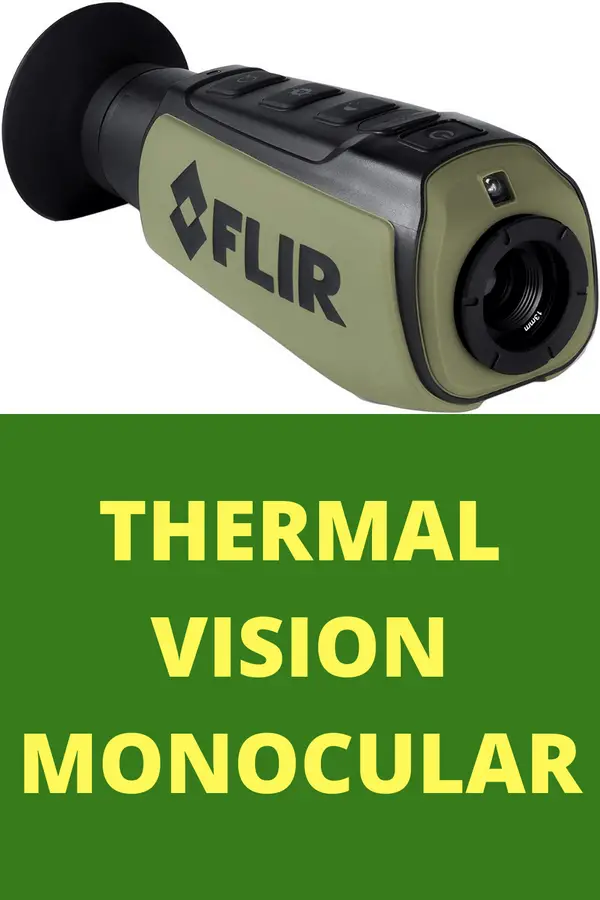
See also: